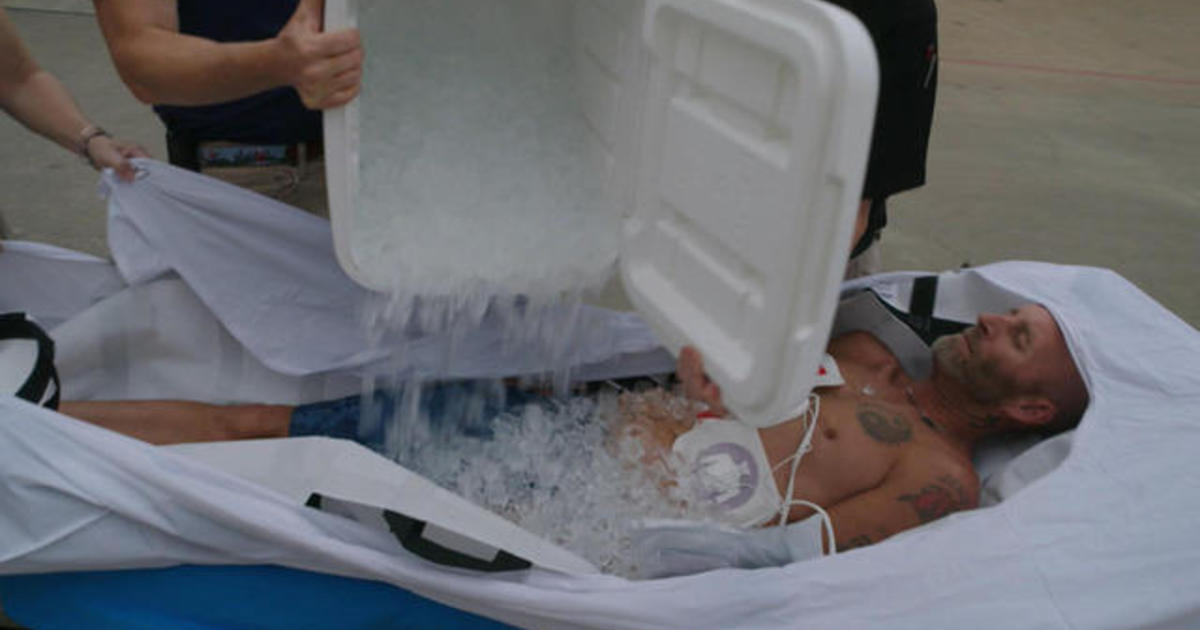During football practice in Fort Myers, Florida, 17-year-old Zach Martin collapsed. His body temperature hit 107 degrees, and when the ambulance arrived on the scene, he was unresponsive and moaning, according to his mother Laurie Giordano.
“I just remember the panic that was setting in in that moment,” Giordano said. “They were just assessing him and then loading him up.”
But what Giordano didn’t know is that when a patient is overheated, the national recommendation is not to load the patient and rush them to the hospital. It’s a technique called “Cool First, Transport Second.” In that process, a patient’s body temperature is brought back down before they are transported to the hospital. It can be lifesaving. However, just 11 states require ambulance services to follow that protocol.
CBS Saturday Morning
Zach died from organ failure 11 days after his collapse. Giordano believes that her “gentle and kind and funny” son could have survived if “Cool First, Transport Second” had been followed.
“As a mother, that first heartbeat is really important to hear on the sonogram,” Giordano said. “I heard his last heartbeat too.”
What is “Cool First, Treat Second?”
Matt Willens is a paramedic who practices “Cool First, Transport Second” when treating a patient who is experiencing extreme heat illness.
The process starts with ice. Then, the patient is loaded into a bag. Ice and water are poured in, and the bag is zipped, with one arm hanging out so Willens can monitor the patient’s blood pressure. This impromptu ice bath allows the patient to cool down rapidly, reducing the impacts of heat illness.
“Now we’re treating them in the field and making that difference and that could save their life,” Willens explained. “That is going to save their life.”
CBS Saturday Morning
The National Association of EMS Officials recommends this protocol when a patient’s core temperature is above 104 degrees Fahrenheit. The patient should remain in the ice bath until their body temperature falls to 102.2 degrees. Then, they can be transported to the hospital.
Preparing for heat illness in a warming world
“Cool First, Transport Second” is more critical than ever as climate change makes summers hotter and hotter. Multiple dangerous heat waves struck the United States in 2024, and excessive heat is the No. 1 cause of weather-related deaths in the United States. Around the world, rising temperatures have caused hundreds of deaths this year.
Heat illness is likely to become more common. A study from the National Institutes of Health found that cardiovascular deaths due to extreme heat are projected to increase in the U.S. between 2036 and 2065, CBS News previously reported, with older and Black adults likely to be disproportionately affected.
Children are also more vulnerable to extreme heat. More than 9,000 high school athletes like Zach are treated for heat-related illnesses every year.
After years of advocacy, Giordano worked with the Florida legislature to pass a law requiring an on-site ice bath at all outdoor high school athletic events. The law, known as the “Zachary Martin Act,” also requires schools to learn about how to treat excessive heat, modify athletic activities based on temperature, and require coaches to complete annual training about how to identify and treat heat illness.
“If you can, if we can get the first response to be cool, then then that’s gonna be where where the lives are saved,” Giordano said.
Giordano said she’s not stopping with high schools. She wants all of the nation’s ambulances to cool heat victims on the spot.
“Everybody has heat waves in this country,” Willens said. “And this is the future of how these heat emergencies should be treated.”


